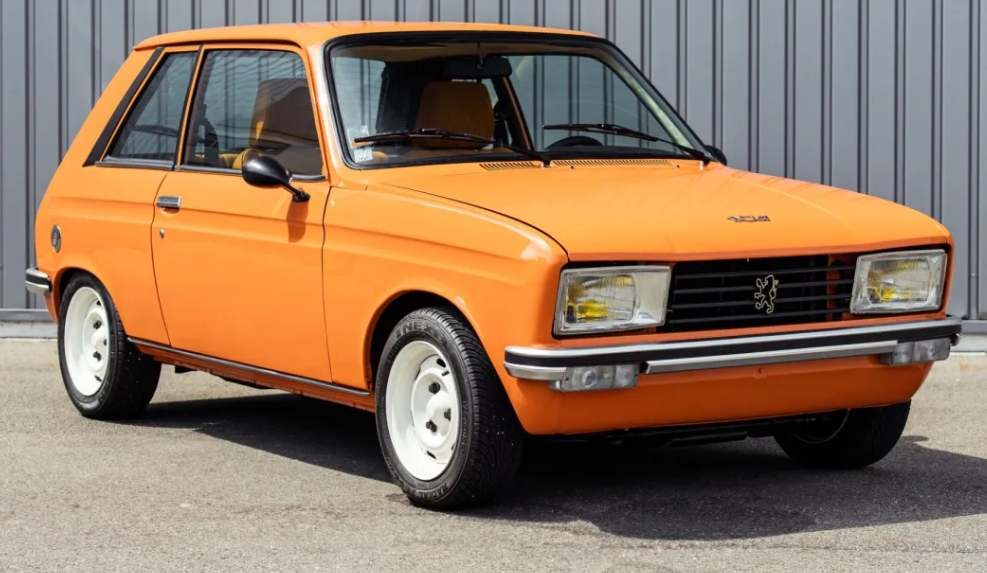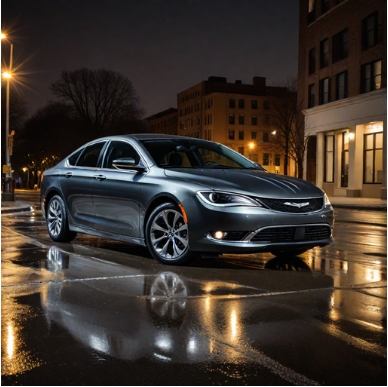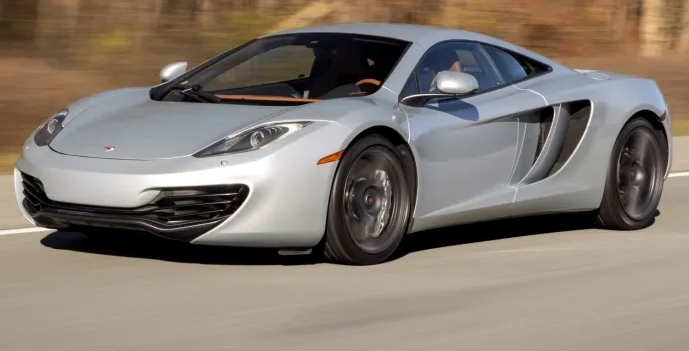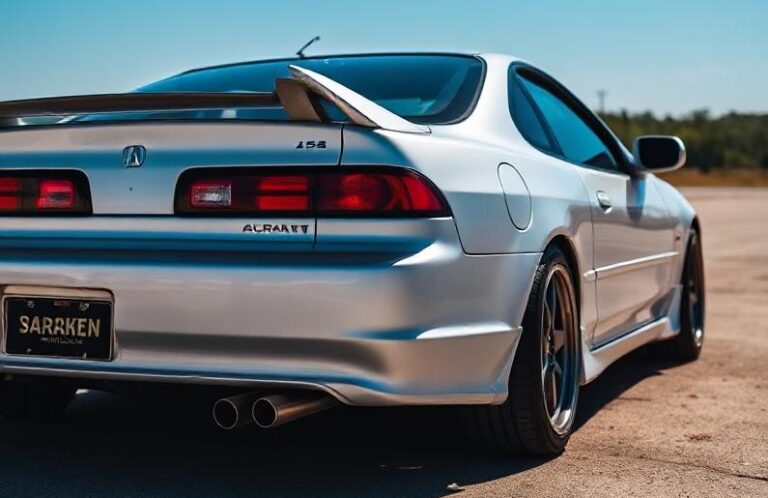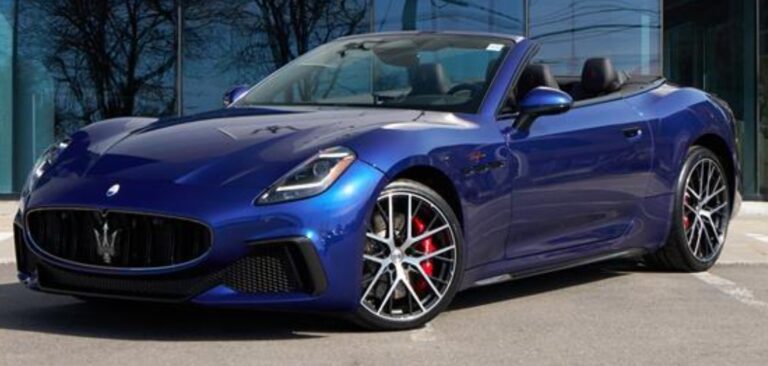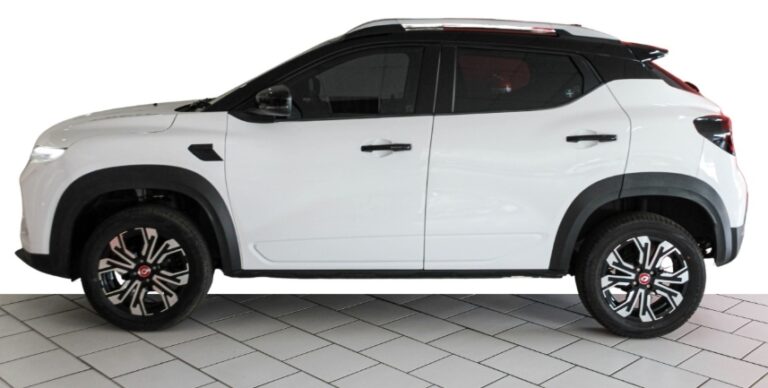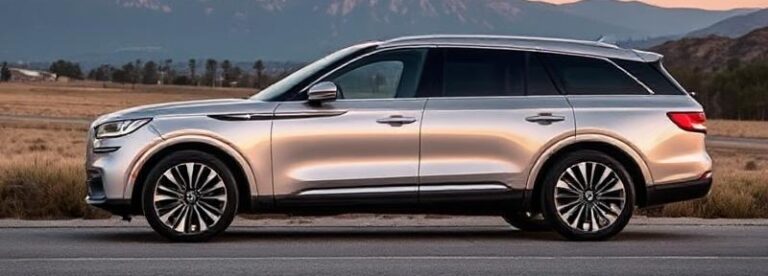From Pioneer to Personalized: The 50-Year Evolution of Peugeot’s City Car Dynasty (Peugeot 104 – 108)
In the grand tapestry of automotive history, few lineages so perfectly mirror the changing face of society as the city car. Born from necessity, refined by competition, and perfected by technology, these diminutive vehicles tell a story of urbanization, economic shifts, and evolving consumer desires. No manufacturer has a more compelling narrative in this segment than Peugeot, whose “1-series” of cars—spanning from the pragmatic 104 to the chic 108—represents a half-century journey in defining the ultimate urban automobile. This is the story of that evolution, a factual chronicle of four distinct generations that shaped cities and drivers alike.
Part I: The Pioneer – The Peugeot 104 (1972-1988)
The story begins in the early 1970s, a period on the cusp of the first major oil crisis. The market was ripe for a car that was compact, economical, and intelligent in its use of space. Peugeot’s answer, unveiled at the 1972 Paris Motor Show, was the 104. Designed by the legendary Pininfarina studio, it was one of the first true European “superminis,” a car that packed surprising interior volume into a tiny exterior footprint.
Production Years: 1972 – 1988
Initially launched as a four-door saloon, the 104 was technically advanced for its time. It featured a transversely mounted, all-aluminium engine tilted backwards at 72 degrees, with the gearbox cleverly located in the engine’s sump—a “suitcase” design that maximised cabin space.
Models and Trim Levels Over Time:
1972-1975: The 104 launched with a 954cc engine. The initial lineup was simple, comprising the base L and the more well-appointed GL trims. These early models were strictly four-door saloons with a small boot lid, not a hatchback.
1974: A pivotal year saw the introduction of a three-door version, marketed as the 104 Coupé (or Z model). Built on a shorter wheelbase, it was stylistically distinct and sportier, aimed at a younger demographic. The initial models were the ZL and the sportier ZS, the latter featuring a more powerful version of the 954cc engine.
1976: This year marked the 104’s most significant update. The four-door saloon was discontinued and replaced by a far more practical five-door hatchback, finally giving the 104 the versatility its shape had always promised. The engine lineup expanded to include a larger 1124cc unit for higher-spec models like the GLS and SL.
The Sporting Legends: The 104 truly cemented its place in enthusiasts’ hearts with its performance variants.
The 104 ZS Coupé became a cult classic. Initially with a 66 hp 1124cc engine, it was light, agile, and a joy to drive. In 1979, it received a major boost with a 1360cc engine producing 72 hp.
The ultimate 104 was the ZS 2, a homologation special released in 1979. Limited to just 1,000 units, it featured a 93 hp version of the 1360cc engine with twin carburetors, wider wheel arches, and alloy wheels. It was a raw, aggressive, and now highly sought-after rally-bred machine.
The Peugeot 104 enjoyed an incredibly long production run, soldiering on in France until 1988, long after its intended successor, the 205, had been launched. Its platform also formed the basis for the Citroën LN/LNA and the Talbot Samba, cementing its legacy as a pioneering and profoundly influential supermini.
Part II: The Modern Classic – The Peugeot 106 (1991-2003)
After a brief hiatus, Peugeot returned to the city car segment in 1991 with the 106. While the all-conquering 205 handled supermini duties, the 106 was positioned as a smaller, more youthful and stylish entry point to the brand. Sharply styled, brilliantly packaged, and renowned for its sublime handling, the 106 quickly became a European favourite and is now widely regarded as a modern classic.
Production Years: 1991 – 2003
Sharing its platform with the later Citroën Saxo, the 106 was a masterpiece of chassis engineering, offering a ride and handling balance that shamed many larger, more expensive cars.
Phase 1 (1991-1996):
The 106 launched as a three-door only, with a five-door version following in 1992. The trim structure was extensive and varied by market, but generally followed a clear hierarchy.
Core Models: The range began with the entry-level XN (often with a 954cc engine), moving up to the XR (1.1L), and the plusher XT (1.4L). Diesel options, primarily a 1.4L and later a 1.5L unit, were also hugely popular for their incredible fuel economy.
Sporting Models:
The XSi: The first warm hatch of the range, initially equipped with a 95 hp 1.4L engine, later upgraded to a 105 hp 1.6L unit. It set the tone for the 106’s sporting prowess.
The Rallye (S1): Launched in 1993, the Phase 1 Rallye is an icon of motorsport purity. Stripped of all non-essential weight (no electric windows, no central locking), it was a homologation special powered by a high-revving 1.3L engine producing 100 hp.
Available only in white, red, or black with distinctive Peugeot-Talbot Sport decals, it was a road-legal go-kart.
Phase 2 (1996-2003):
In 1996, the 106 received a significant facelift, softening its sharp lines, modernizing its interior, and updating its engine range. This second phase saw the introduction of its most legendary models.
Core Models: The trim names were updated to Zest, Independence, Equinox, and Quiksilver, among many other special editions that kept the range fresh.
Sporting Models:
The Rallye (S2): The S2 Rallye swapped the 1.3L for a more tractable 1.6L 8-valve engine producing 103 hp. While slightly heavier, it retained the original’s raw, driver-focused ethos.
The GTi: This was the ultimate 106. Sharing its potent 1.6L 16-valve engine with the Citroën Saxo VTS, it produced 120 hp. In a car weighing under a tonne, this translated to electrifying performance. With its body kit, alloy wheels, and agile chassis, the 106 GTi is considered one of the greatest hot hatchbacks ever made.
The 106 was an immense commercial success, with over 2.8 million units produced. It perfectly captured the spirit of the 1990s and left a legacy of fun, affordable, and brilliantly engineered small cars.
Part III: The City Specialist – The Peugeot 107 (2005-2014)
The automotive landscape shifted in the new millennium. Stricter emissions and safety regulations made developing small cars independently less profitable. Peugeot’s solution was a landmark collaboration: the “B-Zero” project, a joint venture with Toyota and its PSA sibling, Citroën. This partnership produced a trio of near-identical city cars: the Peugeot 107, Toyota Aygo, and Citroën C1, all built in a new factory in the Czech Republic.
Production Years: 2005 – 2014
The 107 was a radical departure from the 106. It was designed purely for the urban environment— shorter, narrower, and taller, with an emphasis on low running costs, manoeuvrability, and reliability, thanks to its Toyota-derived engine.
Models and Trim Levels Over Time:
The 107’s philosophy was simplicity. It was available as a three- or five-door, but with only one engine option throughout its life: a characterful and incredibly frugal 1.0-litre, three-cylinder petrol engine.
2005-2009: The launch model featured a simple trim structure.
Urban Lite / Urban: Entry-level models were basic, often lacking power steering or electric windows.
Sport / Verve: Higher-spec models added features like alloy wheels, air conditioning, rev counters, and more vibrant interior fabrics.
2009 Facelift: The first update was minor, primarily consisting of a redesigned front bumper with a larger air intake and subtle interior trim changes.
2012 Facelift: A more significant refresh brought the 107’s styling in line with the rest of the Peugeot range. It featured a new, smaller front grille, a redesigned bonnet, and the addition of LED daytime running lights—a premium touch for the segment.
The 107 was a smash hit. Its cheeky styling, low insurance group, exceptional fuel economy, and tax-friendliness made it a default choice for first-time drivers and city dwellers across Europe. It proved that a budget car could have character and be fun to drive in its intended environment.
Part IV: The Customisable Choice – The Peugeot 108 (2014-2022)
The second generation of the “B-Zero” project saw the 107 evolve into the Peugeot 108. While still sharing its core structure with the new Aygo and C1, the 108 was designed to feel more mature, sophisticated, and upmarket than its predecessor. The key theme for this generation was personalization.
Production Years: 2014 – 2022
The 108 adopted Peugeot’s contemporary design language, with a more prominent chrome grille and signature “lion claw” rear lights. The biggest innovation was the focus on customisation and technology, bringing features once reserved for larger cars into the city car segment.
Models and Trim Levels Over Time:
Engine Options: The 108 launched with two three-cylinder petrol engines: an updated version of the 1.0L Toyota unit and Peugeot’s own, more powerful 1.2L PureTech engine, offering a significant performance boost. The 1.2L was later discontinued in 2018 to focus on efficiency.
Body Styles: Alongside the standard three- and five-door hatchback, Peugeot introduced the 108 TOP!, a cabriolet model with a full-length retractable fabric roof, adding a new dimension of fun and style.
Trim Levels: The range was structured to encourage personalization.
Access: The no-frills entry point, typically only available as a three-door.
Active: The volume seller, adding essentials like air conditioning and, most importantly, the 7-inch touchscreen infotainment system with smartphone mirroring—a huge selling point.
Allure: Added features like 15-inch alloy wheels, keyless entry and start, and a reversing camera.
GT Line / Collection: These top-tier trims focused on style, offering exclusive color schemes, interior finishes, and sporty design cues.
Customers could further personalise their 108 with a vast range of decals, two-tone paint schemes, and interior colour packs, making it far more of a fashion statement than its predecessors.
The Peugeot 108 represented the peak of the conventional city car. However, by the time its production ended in 2022, the market was once again shifting. The rising costs of meeting emissions standards made the A-segment less viable for manufacturers, leading Peugeot to retire the “1-series” line without a direct internal combustion replacement.
.
NO MORE dead batteries with this:

.
Conclusion: A Legacy of Urban Mobility
From the ingenious packaging of the 104 to the driver-focused purity of the 106, the ultra-efficient simplicity of the 107, and the customisable technology of the 108, Peugeot’s city car dynasty is a perfect microcosm of automotive evolution. Each model was a direct response to the needs of its era, progressing from functional transport to a lifestyle accessory. This 50-year journey not only put millions of drivers on the road but also consistently proved that small cars could be clever, fun, and deeply desirable.
